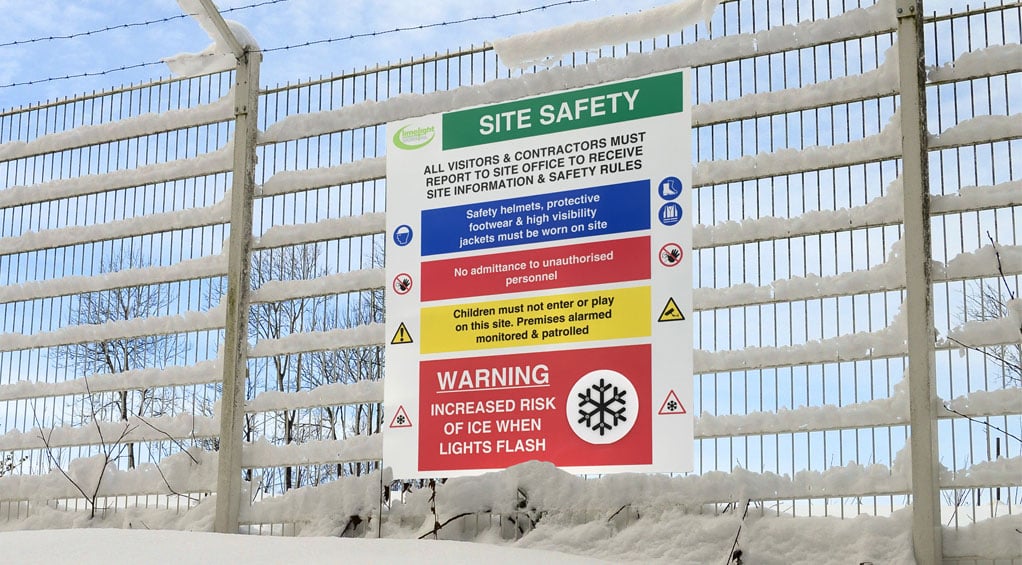
It is a known fact that slip and trip accidents increase during the winter season, which can be for a number of reasons:
- there is less daylight,
- an increase in wet, slippery and cold conditions,
- insufficient lighting around sites can make it difficult to see and avoid ground hazards,
fluctuating temperatures,
- ice and snow build up on roads and paths.
Decreasing temperatures affect wet surfaces or thawing snowfalls which can turn the ground to ice as day progresses to night. Over the course of time several days of snow laden ground can harden to ice. Even a dawn frost can occur on dry surfaces when early morning dew forms and freezes on impact with the cold surface. It can be difficult to predict when or where these conditions will occur. Monitoring temperatures and taking action whenever freezing events are forecast is key to preventative winter maintenance.
The most common method used is gritting areas by spreading rock salt which can stop ice forming and cause existing ice or snow to melt. It is most effective when “ground down” by vehicle or foot traffic, but this will take far longer on pedestrian areas than on roads. Also, salt does not work instantly and needs sufficient time to dissolve into the moisture on the ground.
Knowing when to grit is just as important for effective prevention. The best times are early evening before frost settles and/or early in the morning before people arrive. However:
- If grit is applied in heavy rain showers the salt will be washed away, causing problems if the rain then turns to snow or ice.
- Compacted snow, which turns to ice, is difficult to treat effectively with grit.
- Pre-emptive gritting for a frost event that does not occur can also be a waste of costs and resources
An
LED ice warning sign constantly evaluates the change in temperature and alerts people of an increased risk of ground ice by flashing LEDs continuously when the temperature drops to 3ºC. or below. Super-bright LEDs make an effective visible warning influencing both pedestrians and drivers to take more care in icy conditions.
To reduce the risk of slips on ice, frost or snow, you need to assess the risks and put in a system to manage them. Identify outdoor areas used by pedestrians most likely to be affected by ice, for example: – building entrances, car parks, pedestrian walkways, shortcuts, sloped areas and locations that are constantly in the shade or wet. Put a procedure in place to prevent an icy surface forming and/or warn pedestrians of potential slippery surfaces. Regardless of the size of your site you should always ensure that regularly used walkways and vehicle accesses are promptly tackled.
Extract from HSE.gov.uk